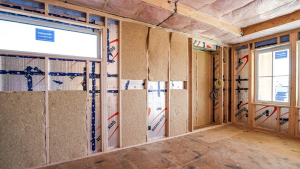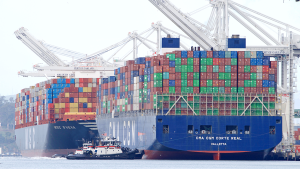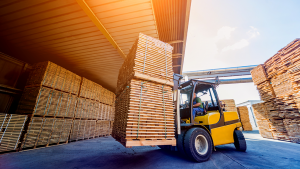Concrete has been the key component of construction as far back as the Romans and Egyptians, evolving over the centuries from mixes of straw and mud, volcanic pozzolan and stone.
However, today’s manufacturing process is rich in carbon dioxide (CO2) emissions, drawing attention from policymakers and environmental interests around the globe. The concrete industry recognizes this and is accelerating new technologies offering the potential to significantly reduce carbon outputs.
“Modern society is built on modern concrete; usage per person is often cited second only to fresh water,” Craig Yeack writes in Concrete Products magazine. Yeak is the co-founder of the Bulk Construction Materials Initiative Corp. (BCMI).
However, Yeak points out that the industry’s environmental perspective is evolving with the times.
“Our industry has been in the forefront with many approaches to mitigating environmental impact: judicious use of materials; producing high-quality products to prevent unnecessary replacement; and, mix optimization with pozzolans such as fly ash and GBBS (commonly known as slag) to reduce CO2 impact and improve concrete’s durability and lifespan.”
The most carbon-intensive step in the production of cement is the calcination process that occurs early on. Crushed limestone is fed into a kiln and heated to about 1,500 F, at that point breaking down into lime and CO2.
Initiatives to reduce the CO2 emissions associated with cement are taking different approaches.
One involves carbon capture and storage, or CCS, during the manufacturing process itself.
Norcem, a cement producer in Brevik, Norway, hopes to begin construction of a new facility that could capture up to 400,000 tons of CO2 annually. Using post-combustion technology developed by engineering firm Aker Solutions, the plant would capture and liquefy carbon, which would then be transported and injected into an offshore storage site 2,500 metres under the North Sea bed.
In Canada, a financial feasibility study is underway by Lehigh Cement, a unit of the German multinational building material company HeidelbergCement. Aided by $3 million in Canadian government support, the facility near Edmonton would, if constructed, capture, compress, liquefy and resell as much as 600,000 tons of CO2 emissions that otherwise would be released into the atmosphere.
Another approach has already been proven and accepted both structurally and financially — the injection of small quantities of captured CO2 from various sources into the cement.
This patented process, developed by CarbonCure of Dartmouth, N.S., has been licensed by several manufacturing and mixing plants around the world. The injected CO2 actually strengthens the mix, allowing builders to achieve equal strength with less cement.
Powering concrete production facilities using renewable energy is moving forward as well, potentially reducing carbons emitted during the intense heating process.
O&G Industries, a privately-owned U.S. material producer, recently flipped the switch on its 3,762-unit PV solar array and energy storage system spanning five acres of quarry spoils. The system generates 1.3MW of power, supplementing peak power demands at the company’s concrete and asphalt operation in Southbury, Conn.
Meanwhile in the Mojave Desert, an assembly of 400 giant mirrors focuses the sun’s rays on a central tower, generating temperatures over 1800 F. The company behind this futuristic system is called Heliogen, a recent start-up partially funded by Bill Gates’ investment fund, an early backer of Canada’s CarbonCure.
According to Heliogen, the project’s goal is, “to use concentrated solar energy to power industrial processes that require a lot of heat, such as steel and cement manufacturing.”
CEO Bill Gross says the company has already installed a small cement oven on the top of the tower, using it to replicate the most carbon-intensive step in the production of cement.
A similar project in Europe called Solpart is being researched.
Over in Rapid City, South Dakota, cement manufacturer GCC has signed a multi-year agreement with Black Hills Energy’s Renewable Ready Program, projected to provide about 50 per cent of its energy needs using wind power. The projected reduction to the plant’s CO2 emissions, approximately 50,000 metric tons annually, equates to taking 11,000 cars off the road.
John Bleasby is a Coldwater, Ont. based freelance writer. Send comments and Inside Innovation column ideas to editor@dailycommercialnews.com.











Worth checking out Carbon8 Systems in the UK. They have developed a solution that combines cement bypass dust with captured CO2 from the cement plant to produce (onsite) useable aggregate product. After successful trials in Canada and UK, they will soon announce their first major commercial agreement. http://www.c8s.co.uk